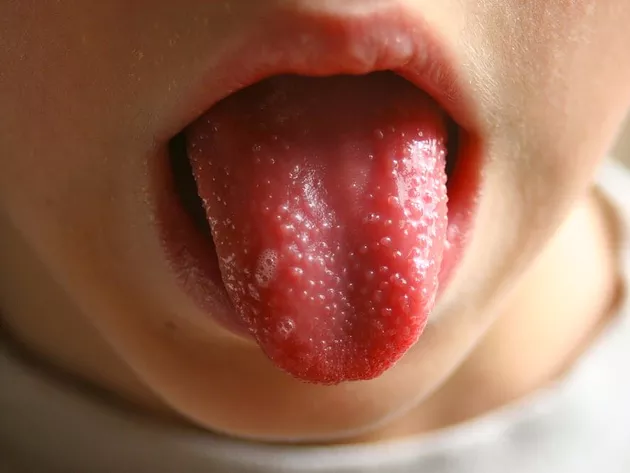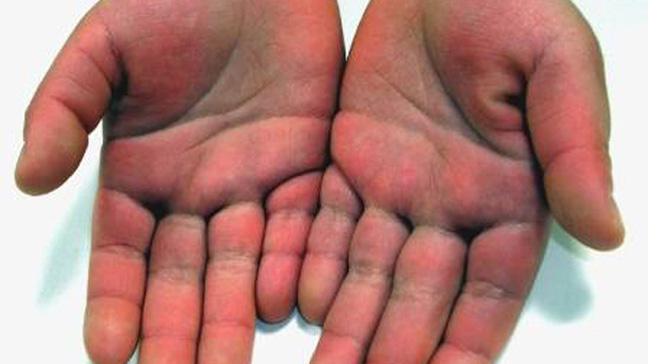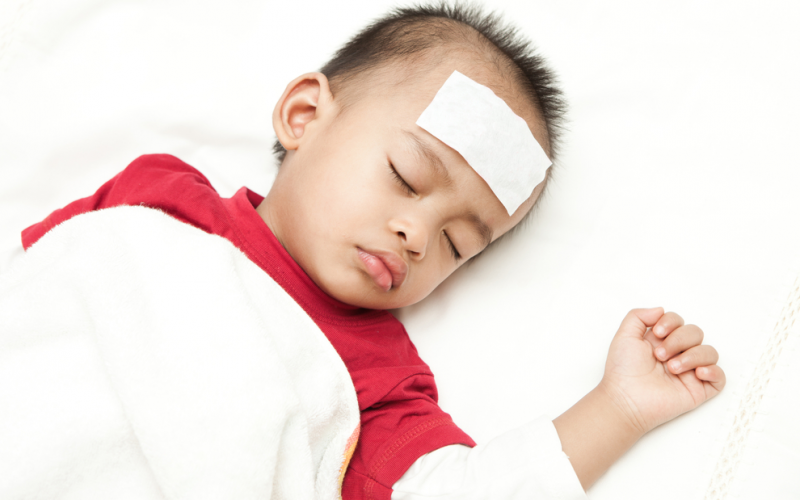Kawasaki disease is a short-term and rare illness that often occurs in infants and young children mostly under the age of 5. A type of juvenile arthritis, it is also called mucocutaneous lymph node syndrome as it also can affect mucous membranes, lymph nodes and skin inside the nose, throat and mouth.
This disease causes inflammation in the walls of medium-sized arteries all over the body. The inflammation also affects the coronary arteries which supply blood to the heart muscle. Kawasaki disease is usually treatable and most of the children recuperate from it without getting serious problems.
Learn about its cause and risk factors, signs and symptoms, complications, diagnosis and treatment.
Signs & Symptoms

A child having Kawasaki disease experiences inflammation of blood vessels all over the body. This can cause damage to coronary arteries.
The symptoms typically appear in three phases and they are:
1. First phase signs
- Irritability
- Extremely red eyes (conjunctivitis) without a thick discharge
- Fever that is often is higher than 102.2 F and lasts more than 3 days
- Rash on the main part of the body (trunk) and genital area
- Swollen, red skin on the palms of the hands and the soles of the feet
- Red, dry, cracked lips and strawberry-looking extremely red, swollen tongue
- Swollen lymph nodes in the neck and perhaps elsewhere
2. Second phase signs
- Diarrhea
- Joint pain
- Vomiting
- Abdominal pain
- Large peeling of the skin on hands and feet, especially fingertips and toe-tips
3. Third phase signs
In the final phase, the signs and symptoms gradually go away unless the complications develop. It may take upto 8 weeks before the energy levels come back to normal.
Complications

One of the major causes of heart ailment in children, Kawasaki disease can require surgery in certain severe cases. It can be treated if discovered at an early stage and only a small percentage of people have serious
complications with lasting damage.
In rare cases, children may have:
- Inflamed blood vessels (vasculitis) usually coronary arteries
- Inflamed heart muscles (myocarditis)
- Damaged heart valves (mitral regurgitation)
- Abnormal heart rhythms (dysrhythmia)
Further problems may arise including bulging and weak artery walls (aneurysms). This could increase the chances of having artery blockages and it may cause internal bleeding and even heart attacks. In some children with coronary artery problems, Kawasaki disease is fatal despite the treatment.
Causes & Risk Factors Of Kawasaki Disease

No one knows the cause of Kawasaki disease but the researchers believe that the disease is not caused contagious. Different theories, though unproven, associate the disease to virus, bacteria, and genetic or environmental factors like chemicals and irritants. It is more likely to occur in winter and spring season but can happen round the year.
The risk factors that a child might develop Kawasaki disease include:
-
Age: The children below the age of 5 are at a high risk of getting the disease.
-
Gender: The boys are at a bit higher risk of developing this illness.
-
Ethnicity: The children of all ethnic and racial backgrounds can be affected by the disease but people of Asian or Pacific Island descent such as Japanese or Korean are at a higher risk of having Kawasaki disease.
Diagnosis

No particular test is carried out for diagnosing the Kawasaki disease. The diagnosis is basically a process of eliminating the diseases causing symptoms such as scarlet fever, toxic shock syndrome, juvenile rheumatoid arthritis (JRA), measles, sore throat, Stevens-Johnson syndrome and certain tick-borne illnesses such as Rocky Mountain spotted fever.
The doctor will carry out various physical examinations to diagnose the condition of your child. These tests are:
- Blood tests
Apart from ruling out other diseases, blood tests check for white blood cell count which is likely to be elevated. The presence of anemia and inflammation indicates Kawasaki disease.
You need to test for a substance called B-type natriuretic peptide (BNP) that is released when the heart is under stress.
- Urine tests
These tests help in ruling out other diseases.
- Echocardiogram
This test makes use of ultrasound images to know how well the heart is functioning and can help in identifying coronary artery abnormalities if it’s there.
- Electrocardiogram
This test utilizes electrodes attached to the skin for measuring the electrical impulses of your child's heartbeat.
Treatment

The child with Kawasaki disease may experience extreme pain due to swelling, skin irritation and fever. A doctor may prescribe medications for relief such as aspirin and others for preventing blood clot. No medication should be given without doctor’s consent.
For reducing the risk of any further complication, the doctor will start the treatment as soon as the signs and symptoms appear, especially when your child still has a fever. The initial treatment aims to lower fever and prevent heart damage. And due to high risk of complications, most of the children are initially treated in the hospital.
The doctor may recommend these initial treatments to your child:
-
Gamma globulin: Infusing an immune protein (gamma globulin) through a vein (intravenously) can reduce the risk of coronary artery problems.
-
Aspirin: The high doses of this medicinal drug may help in treating inflammation and preventing clotting. It can also reduce pain and joint inflammation besides fever.
After the initial treatment has been done, your child may require a low-dose aspirin for about 6 weeks or more after the fever comes down and if he/she develops a coronary artery aneurysm.
And in case a child develops flu or chickenpox at the time of treatment, he/she may need to stop aspirin. If no treatment is given, the disease may last for about 12 days and complication may arise later for long time. Whereas with treatment, your child may start showing improvement after the first gamma globulin treatment.
If any heart problems are indicated, follow up tests for monitoring heart health will be required at regular intervals. A pediatric cardiologist may be referred by your doctor in case of recurrent heart problems. A child with a coronary artery aneurysm may require anticoagulant drugs (prevent clotting), coronary artery angioplasty (opening narrowed arteries), stent placement (opening the clogged artery and decreasing the chance of another blockage) and coronary artery bypass graft (rerouting the blood around a diseased coronary artery).
Image Source:
1. wixstatic
2. healthline
3. bundoo
4. medicalnewstoday
5. bbci

